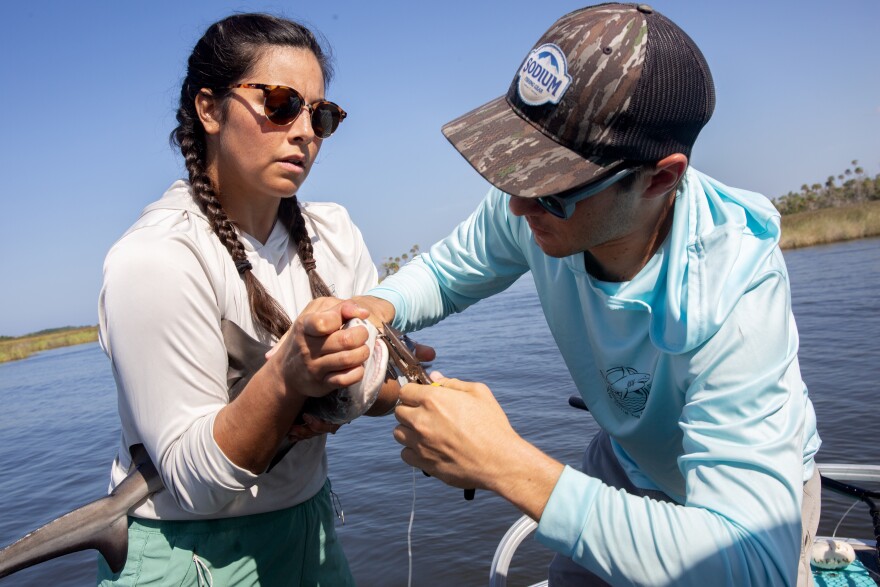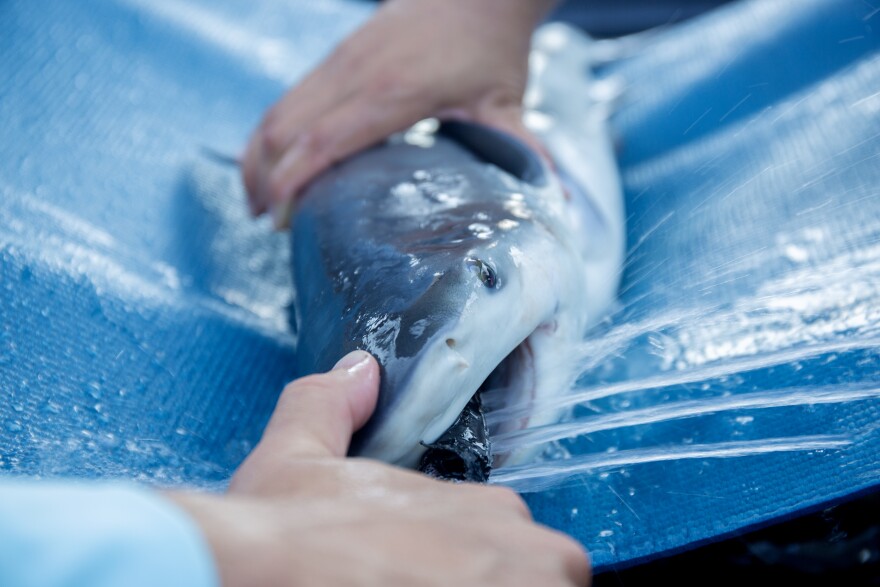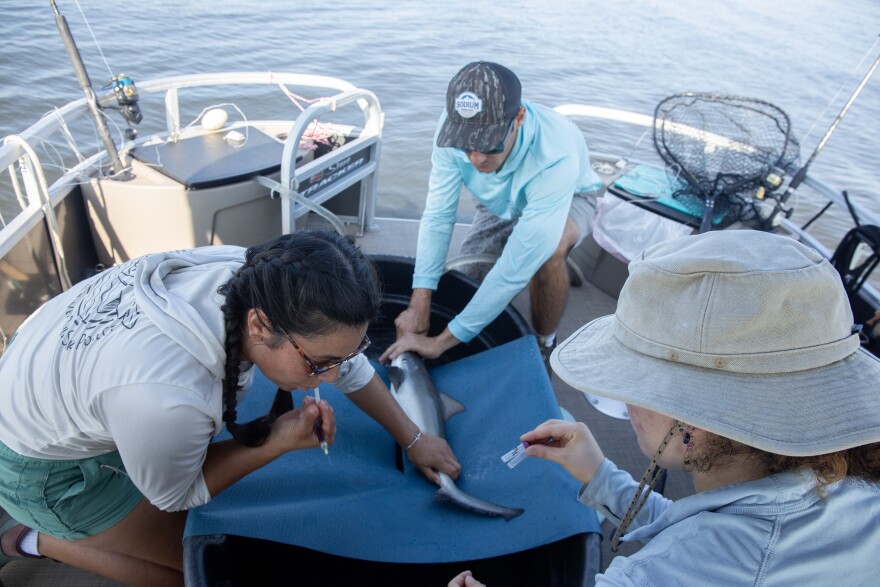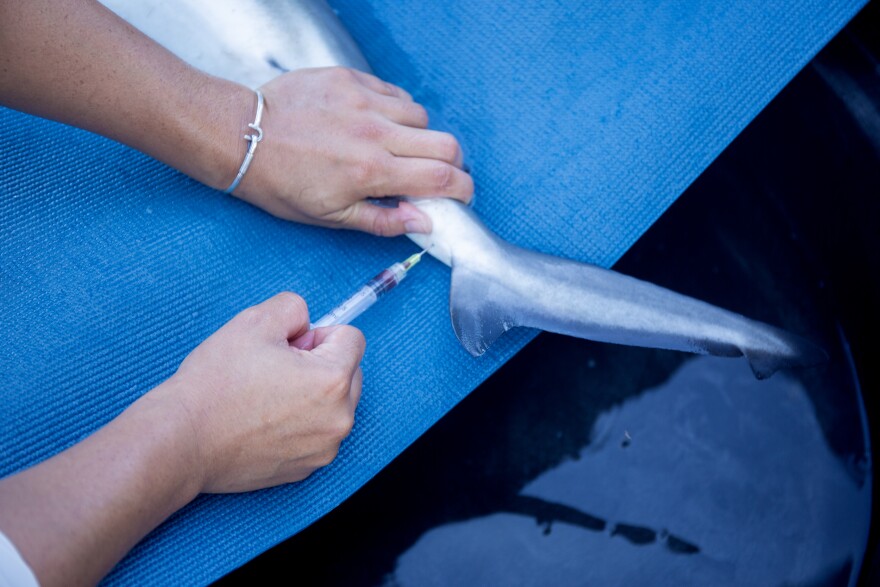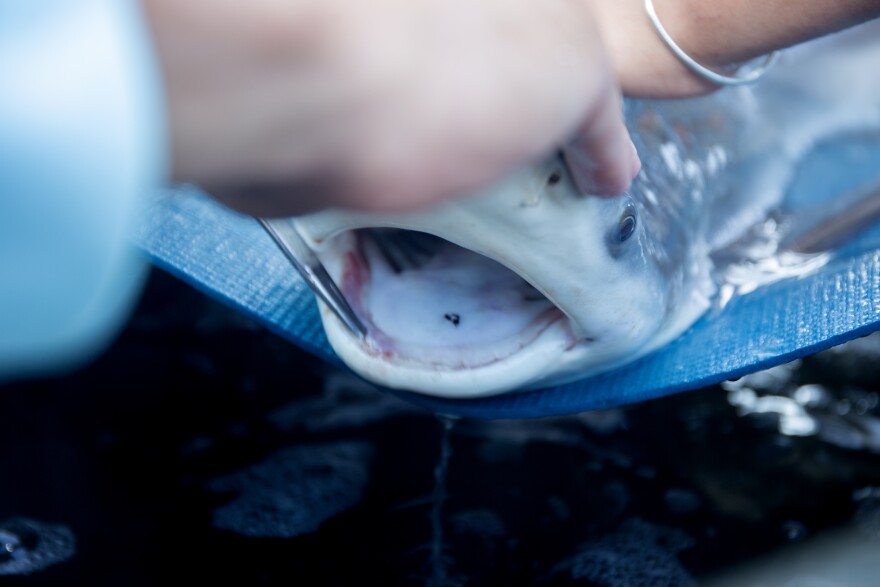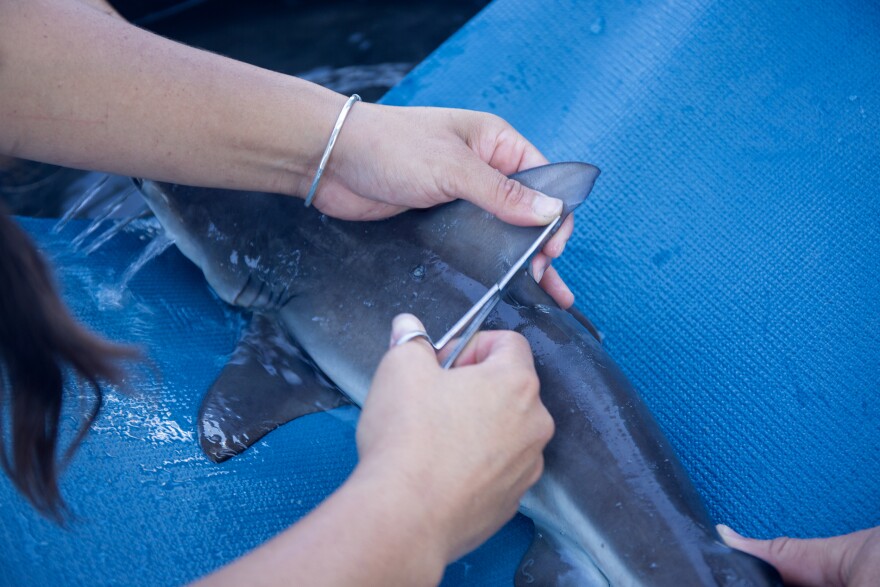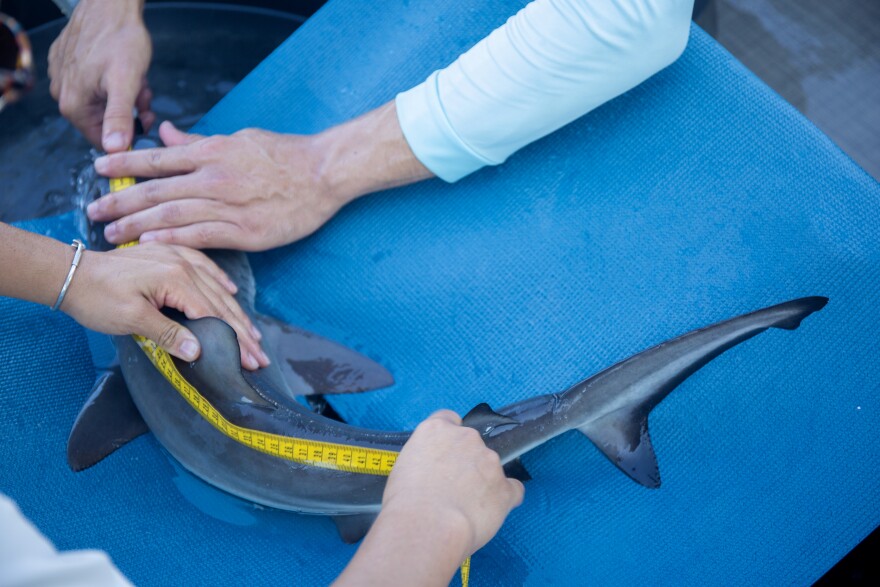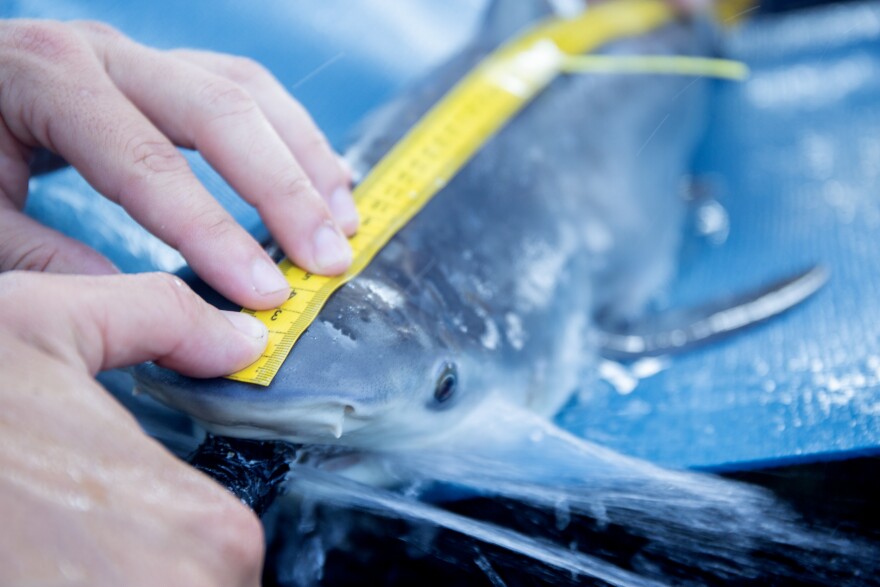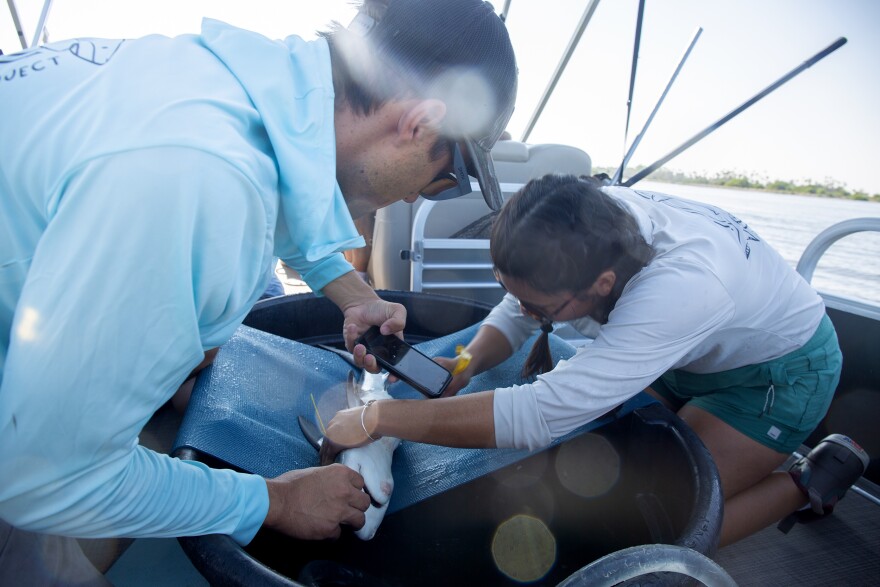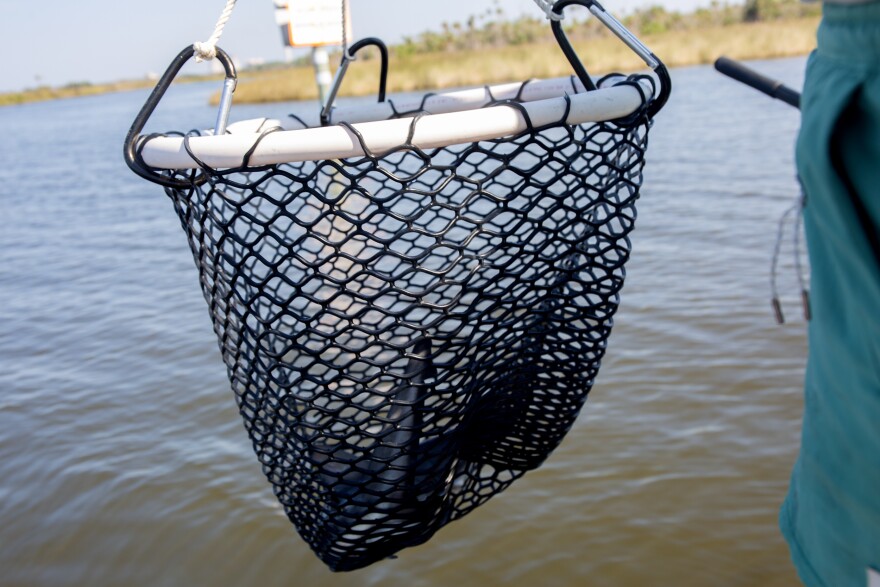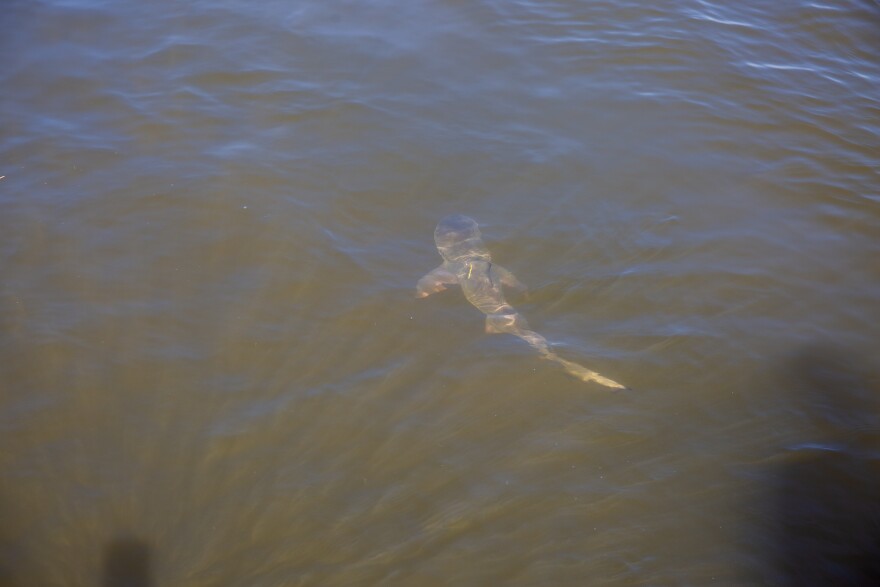It's 8 in the morning on a warm summer day as we crank up the pontoon boat at Pete's Pier Marina and head out into King's Bay.
A parade of powerboats roar by in the main channel, heading out to the Gulf of Mexico. This early in the morning, the heat has yet to bear down. The slightly salty air has the aroma of sun block and ladyfish cut into blocks of chum.
Soon enough, there's a tug on the fishing line. On the other end is a juvenile bull shark. With lots of youthful energy.
“Oh, you're mad, I know, I get it. So mad, so mad. I know I know I know...,” says , the lead scientist on a study of these creatures.
The postdoctoral fellow at Florida State University' is anything but a dispassionate scientist. She empathizes with the little guys, calling them "baby" and "sweet pea."
READ MORE: Beautiful but highly destructive: On the hunt to kill elusive, invasive lionfish on Florida’s reef
“They're just cool. Actually, wait till you see these babies. They are, in fact, very cute,” she said with a laugh.
Andres puts some chum on a hook and minutes later pulls one of those "babies" out of the river, with the Crystal River power plant's cooling towers as a backdrop. They are about 2 feet long, with a sandpapery skin reminiscent of a sting ray.
And yes, they are cute.
“This is way too big for her. Just the applicator,” she says. “She's so little, so little. This is the smallest one is it? I think so. Just looking beautiful.”
They take measurements, weigh her, take a biopsy after checking for parasites and release her back into the river.
“All right, little one. You ready to go?” she ask the shark. “Come on baby go, go, go. Oh E on the release E on the release looks amazing."
That's "E" as in excellent.
Why do bull sharks migrate here?
The second largest spring system in the state is the palette for this study. Andres and her boyfriend, Harrison Clark, are both researchers at FSU, and do this on weekends as a part-time gig.
What they're trying to do is create a baseline understanding of what's here and what we expect to find in the future.
And like many things in nature, it ties into climate change.
Bull sharks are cold-sensitive. Even though they're found throughout the Gulf, the females use estuaries such as Crystal River for nurseries. The constant 72-degree water keeps them warm during cold snaps. But as ocean temperatures rise, scientists want to find out how far north they are migrating.
“And so we think that springs habitats might provide a better, more stable habitat across the year,” Andres said. “And certainly as waters continue to warm or fluctuate temperature, we think that this might be a really interesting area different from all the other known nurseries.”
They've inserted radio tags in 14 sharks to date, but more have been outfitted with passive identification called “spaghetti tags." They've taken measurements and tissue samples from 44 sharks in the past year.
Funding for their research comes from proceeds from the state's "Protect Florida Springs" specialty license plates through the Fish and Wildlife Foundation of Florida.
"We were thrilled to award two grants to Alyssa and her team for this important project," said Andrew Walker, president & CEO of the Fish & Wildlife Foundation of Florida. "Their work will provide invaluable insight into how bull sharks are using Crystal River, providing guidance for future conservation efforts."
They're also pairing with s to be able to provide opportunities for minorities in STEM fields to be able to participate in this research.

It's all on a shoestring budget, however. Their pontoon boat is owned by a relative of Harrison Clark, Andres' boyfriend and the lead field technician for this study.
They got involved when they were at his family's riverfront home a couple of years ago, and saw a fisherman hooking a shark. Clark yelled out to them about its size and weight, and a light bulb went off in his head about doing a study.
'An incredibly special ecosystem'
This is personal for Clark, who’s a native of Crystal River.
“If we can kind of establish that this is another species that relies on this system. It's kind of another arrow in the quiver for springs conservation as a whole as well, not just shark conservation,” he said. “As these places kind of get more and more developed, it's a kind of a key intersection of conservation and education.”
Added Andres: "Harrison grew up here, was able to share this beautiful place with us and our friends. And this is being the second largest spring system in the state. It's such an incredibly special ecosystem. And so for us, to be able to add any kind of knowledge to our understanding of this ecosystem means so much to us from a conservation standpoint and from somebody who's loved and lived and recreated in these waters — certainly his whole life — and in the time that I've known him, it means a lot to us."
The sharks reach about 10 feet when fully grown. The ones we're after this summer morning are only about 2 feet long.
They are the only shark species that can tolerate long periods of freshwater exposure, sometimes venturing hundreds of miles inland via coastal river systems.
"We take blood samples, we take a small, little trailing edge of their fin for genetics, we take a small muscle biopsy for chemical analysis and we tag and then we, if possible, take parasite samples and teeth samples also for chemical composition and for health analysis for these animals," Andres said.
They're also asking for help from anyone who ventures into these waters.
"We're asking members of the public in Crystal River and Kings Bay to report to us when they catch a bull shark and we're involving them in the data collection process," she said. "So it's trying to get the community involved in this data collection and for us to kind of pull back that proverbial veil, so to speak, on what it is that we as scientists do and what this information is used for."
She said preliminary results show the bull sharks are gravitating to the springs in the winter and during cold snaps. And they're sheltering as far away from coast as they can get.
A new research study published in the found that the juvenile bull shark population had increased fivefold from where it was 20 to 30 years ago in Mobile Bay, Ala., and in several Texas estuaries — an increase scientists attribute to climate change — and one is likely occurring in estuaries along Florida’s Gulf Coast, like Crystal River.

Copyright 2024 WUSF 89.7

